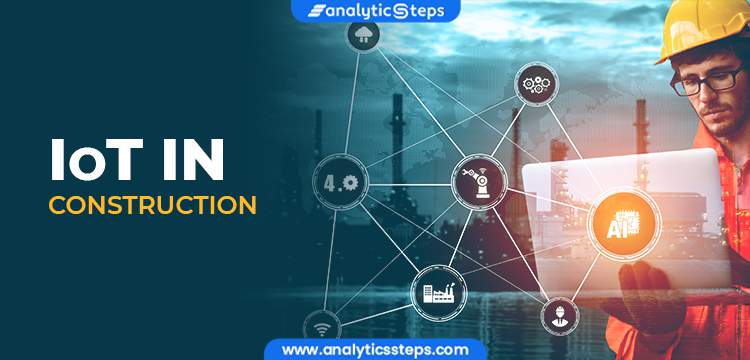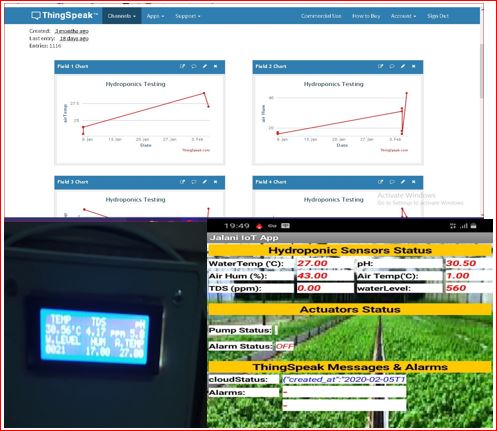Imagine a building that breathes with you. It adjusts the temperature as you walk in, dims the lights when you leave a room, and even detects potential equipment failures before they happen. This is the future of construction, powered by the Internet of Things (IoT) and its seamless integration with Mechanical, Electrical, and Plumbing (MEP) systems.

But the road to this smart building utopia isn’t without its bumps. Let’s delve into the exciting opportunities and the inherent challenges of incorporating IoT into MEP projects. Buckle up, engineers, contractors, and building enthusiasts, because we’re about to explore the intricate dance between innovation and implementation.
Challenges: The Thorns Among the Roses
The potential of IoT in MEP projects is undeniable. However, several hurdles need to be addressed before widespread adoption becomes a reality. Here are some of the key challenges:
- Cybersecurity: Imagine a hacker gaining control of your building’s temperature or lighting systems. Yikes! As more devices become interconnected, the attack surface expands. Robust cybersecurity measures, secure data encryption, and constant vigilance are crucial to keep prying eyes at bay.
- Data Privacy: With IoT sensors collecting a constant stream of data on everything from occupancy levels to energy consumption, concerns around data privacy are paramount. Clear data ownership policies, user consent mechanisms, and robust data security practices are essential to build trust and ensure compliance with regulations.
- Interoperability: Picture a symphony orchestra where each instrument plays a different tune. That’s the potential scenario with incompatible systems from various vendors. Open communication protocols and standardized data formats are necessary for seamless integration and smooth operation of the entire IoT ecosystem within an MEP project.
- Cost: Adding a new layer of technology to existing infrastructure comes with a price tag. Careful cost-benefit analysis, identifying projects with high ROI potential, and exploring innovative financing models are crucial for making IoT in MEP projects financially viable.
- Skill Gap: The current workforce might not be fully equipped to handle the complexities of IoT integration. Investing in training programs to equip engineers, technicians, and facility managers with the necessary skills to design, install, and maintain IoT-enabled MEP systems is crucial.
Solutions: Taming the Thorns
These challenges might seem daunting, but don’t despair! Here are some potential solutions and best practices:
- Prioritize Cybersecurity: Implement firewalls, conduct regular security audits, and employ secure communication protocols like HTTPS. Remember, cybersecurity is an ongoing process, not a one-time fix.
- Be Transparent About Data: Clearly explain to building occupants how their data is collected, used, and protected. Provide user-friendly interfaces for individuals to access and control their data.
- Embrace Open Standards: Advocate for and adopt industry-wide standards for communication protocols and data formats. This ensures different devices and systems can “talk” to each other seamlessly.
- Conduct Thorough Cost Analysis: Carefully evaluate the upfront costs of IoT integration against the potential long-term benefits like energy savings, improved efficiency, and reduced maintenance needs. Explore financing options like leasing or pay-as-you-go models to make the technology more accessible.
- Bridge the Skill Gap: Invest in training programs to equip professionals with the necessary skills to design, install, and maintain IoT-enabled MEP systems. Universities and technical schools can also play a vital role by incorporating relevant courses into their curriculums.
Opportunities: The Blossoming Rose Garden
Once we overcome these challenges, the opportunities unleashed by IoT in MEP projects are truly transformative. Here’s a glimpse into the future:

- Predictive Maintenance: Imagine sensors that can detect potential equipment failures before they happen. This allows for proactive maintenance, preventing costly downtime, extending equipment life, and optimizing overall system performance.
- Remote Monitoring and Control: Facility managers can remotely monitor and control various MEP systems from a central location. This improves operational efficiency, reduces response times to issues, and allows for real-time adjustments based on occupancy or environmental conditions.
- Personalized Comfort Control: Ever crave a cooler workspace in the summer or a warmer bathroom floor in the winter? IoT-enabled systems can personalize temperature, lighting, and ventilation based on individual preferences, leading to a more comfortable and productive building environment.
- Energy Optimization: Smart sensors can detect inefficiencies in energy consumption and suggest adjustments to building systems. This translates to significant cost savings on utility bills and a reduced environmental footprint.
- Improved Indoor Air Quality: IoT sensors can monitor air quality levels and trigger automatic adjustments to ventilation systems, ensuring a healthy and comfortable breathing environment for building occupants.
Conclusion: Building a Smarter Future, Together
The integration of IoT into MEP projects holds immense potential for revolutionizing the way we design, construct, and operate buildings. By addressing the challenges head on and embracing innovative solutions, we can unlock a future of smarter, more efficient, and sustainable buildings. This collaborative effort requires not just technological advancements but also a shift in mindsets. Architects, engineers, contractors, and facility managers must work together to create a holistic approach that seamlessly integrates IoT into the entire building lifecycle, from design and construction to operation and maintenance.
The future of MEP projects lies in harnessing the power of data and leveraging it to create intelligent buildings that adapt and respond to our needs. As we navigate this exciting yet challenging frontier, let’s remember the ultimate goal: to create buildings that are not just functional structures but thriving ecosystems that enhance our well-being and contribute to a more sustainable future.
FAQs
1. Is IoT integration in MEP projects right for every building?
Not necessarily. The cost-benefit analysis should be carefully considered. Projects with high energy consumption or requiring complex environmental control might benefit more from IoT integration compared to simpler structures.
2. How can I secure my building’s IoT network?
Implement a layered security approach. This includes strong passwords, firewalls, secure communication protocols, and regular security audits. Staying updated on the latest cybersecurity threats is also crucial.
3. What are some of the existing open standards for IoT in buildings?
Several standards are emerging, including BACnet, Zigbee, and LoRaWAN. Following these standards ensures better interoperability between different devices and systems.
4. What skills are essential for working with IoT in MEP projects?
A strong understanding of building systems, data analytics, cybersecurity, and communication protocols is crucial. Additionally, familiarity with specific IoT platforms and devices relevant to the project is beneficial.
5. Where can I learn more about IoT for MEP projects?
Several industry organizations and educational institutions offer courses and resources on this topic. Look for training programs from ASHRAE (American Society of Heating, Refrigerating and Air-Conditioning Engineers) or organizations like CxEnergy, specializing in building performance.
By embracing the potential of IoT and working together to overcome the challenges, we can build a future where MEP systems are not just functional but intelligent partners in creating a more comfortable, efficient, and sustainable built environment.
Read Also
Flagship Features, Budget Price: The Best Mid-Range Gaming Phones for 2024
The Secret Weapon That Made Nvidia the World’s Most Valuable Company
This Summer Work Abroad Program Lets You Explore the US & Build Your Resume
For The Horror Fanatics: 5 Must-See Mike Flanagan Horror Classics

